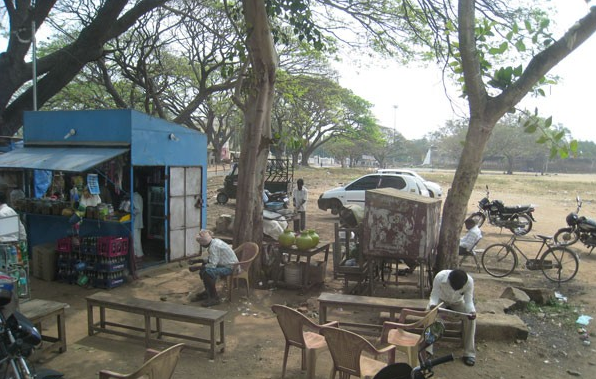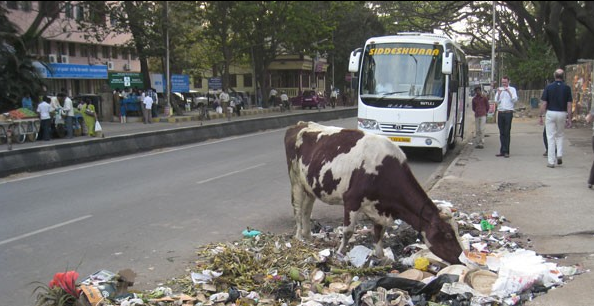Two Faces of India
India is a country with many faces. The world’s largest multi-national conglomerates have offices there, but the towns and cities outside of those perimeters are desolate, broken-down neighborhoods with one the most poverty-stricken populations in the world. The people are famously polite and kind with the most beautiful smiles you will ever see. At the same time, metropolitan areas like New Delhi are so dangerous that tourists are recommended not to travel alone even in broad daylight.
 The exchange rate fluctuation is intense. At times, exchange rates can double or halve several times in a single day. While India has such a huge domestic market with the world’s second largest economy, the export market is still taking its baby steps. India is home to the world’s richest people, but at the same time it is not uncommon to see entire families out on the streets begging for money. Lower income families live in shanties little better than four low walls and sometimes no roof at all. Tourists who do not know the Indian situation well can take a wrong turn and wander into someone else’s house without even knowing it.
Although India still has one of the poorest populations in the world, it is rising as one of the world’s fastest growing economies. Indians are confident that the next rising star of Asia will not be China, but India. These movements can be seen all over the country. Run-down slums are showing signs of revitalization. At least 70% of Bangalore is under construction and other infrastructure like roads, utilities, and even metro lines are going up in other major metropolitan areas as well. India’s biggest industry at the moment is the BPO industry with the world’s largest market for outsourced call centers. As a result, other service sector industries are growing as well. With a very young population fluent in English and among the smartest in the world, India’s service sector economy is growing at an amazing rate.
Even in the midst of the transition into the modern age, Indians pride themselves in the abundance and depth of their colorful cultural heritage. Whereas even highly-educated Koreans do not know the histories behind major historical artifacts like the palaces in Seoul or the landmarks in Kyungju, any Indian can recite by hear the histories of ancient palaces and temples. Like Korea, India has had a sad history of war and invasion at the hands of the Britains centuries back. As if to commemorate the losses and sacrifices of their ancestors, Indians take great pride in their cultural artifacts.
 Indian temples and major palaces are holy and sacred places with high levels of security measures to protect the artifacts. Most temples and palaces do not allow shoes or cameras on their grounds. An interesting fact is that foreigners are charged more for entrance fees than Indians. One explanation is that foreigners do not show the necessary respect for the history and tradition behind these temples and palaces and must hence pay extra for their transgressions.
India is the 7th huge country in the world with 28 different official languages spoken. Each area has its own history and own tradition. One of the traditional artifacts most difficult to keep track of are India’s folk dances. It is almost as if each village has its own dance forms. However, the universal underlying aspects of Indian dance are the reverence the dancers show for their dances and special care for their facial expressions.
The audience is not allowed to eat or drink anything during the dance performances because these dances is also holy rituals that must be shown respect. Photography of these dances are also prohibited in some parts of the country. An Indian folk dancer is more than just an artist; he or she is an artifact unto his or herself. India’s rich culture and rapidly growing industry sectors are an attraction for many kinds of visitors. There are businesspeople who are trying to capitalize on the growing market and there are students who try to take in the myriad of different cultures before changes overcome them. India still is an exotic country and will remain an attraction for some time yet.
인도의 두얼굴
인도는 다양한 얼굴의 나라다. 세계 최대 다국적 기업들이 인도에 진출해 있지만 주변 시내는 세계에서 가장 가난한 빈민촌에 들어갈 정도다. 인도 사람들은 유명할 정도로 친절하고 세상에서 가장 아름다운 미소를 가지고 있다. 동시에 뉴델리와 같은 지역들은 대낮에도 혼자 다니면 위험하다.
환율변동은 격심하다. 어떤 경우 같은 날에도 환율이 몇 배로 왔다 갔다 할 수 있다. 인도의 내수시장은 세계 두 번째로 많은 인구 덕에 안정적이지만 수출 시장은 아직까지 걸음마를 떼지 못하고 있다.
인도에는 세계 갑부 라인에 속하는 부자들도 살지만 온 가족이 노숙자 신세를 지고 있는 가난한 사람들도 심심치 않게 볼 수 있다. 저소득층 가정들은 간신히 벽면 4개만 있고 어떤 경우 지붕도 없다. 상황을 잘 모르는 관광객들은 길을 잘못 들었다가 남에 집에 들어가도 모를 정도다.
인도는 세계에서 가장 가난한 인구를 가지고 있으면서도 가장 빠르게 성장하는 경제구조를 갖고있다. 인도인들 사이에는 아시아의 별은 중국이 아닌 인도가 될 것이라고 여기고 있다. 이런 움직임들은 실제 전국 곳곳에서 나타나고 있다. 슬럼가들이 재기의 기미를 보이기 시작했다. 방갈로의 70% 가량이 재개발 공사 중이며 다른 대도시에서도 도로, 공공설비, 심지어 전철까지 인프라 구축에 몰입하고 있다.
현재 인도의 가장 큰 산업은 BPO 산업이며 인도는 세계 최대의 서비스 콜 센터 수주국이다. 그 결과 다른 서비스 산업들도 발달하고 있다. 젊고 영어에 능통한 인도 청년들은 세계에서 아이큐가 가장 높기도 하다. 인도의 서비스 분야가 급속도로 성장할 수 밖에 없는 환경구조이다.
현대화 되어가고 있는 이 시점에도 인도인들은 인도의 풍부하고 뿌리 깊은 문화유산을 끔찍이 아낀다. 한국의 |

